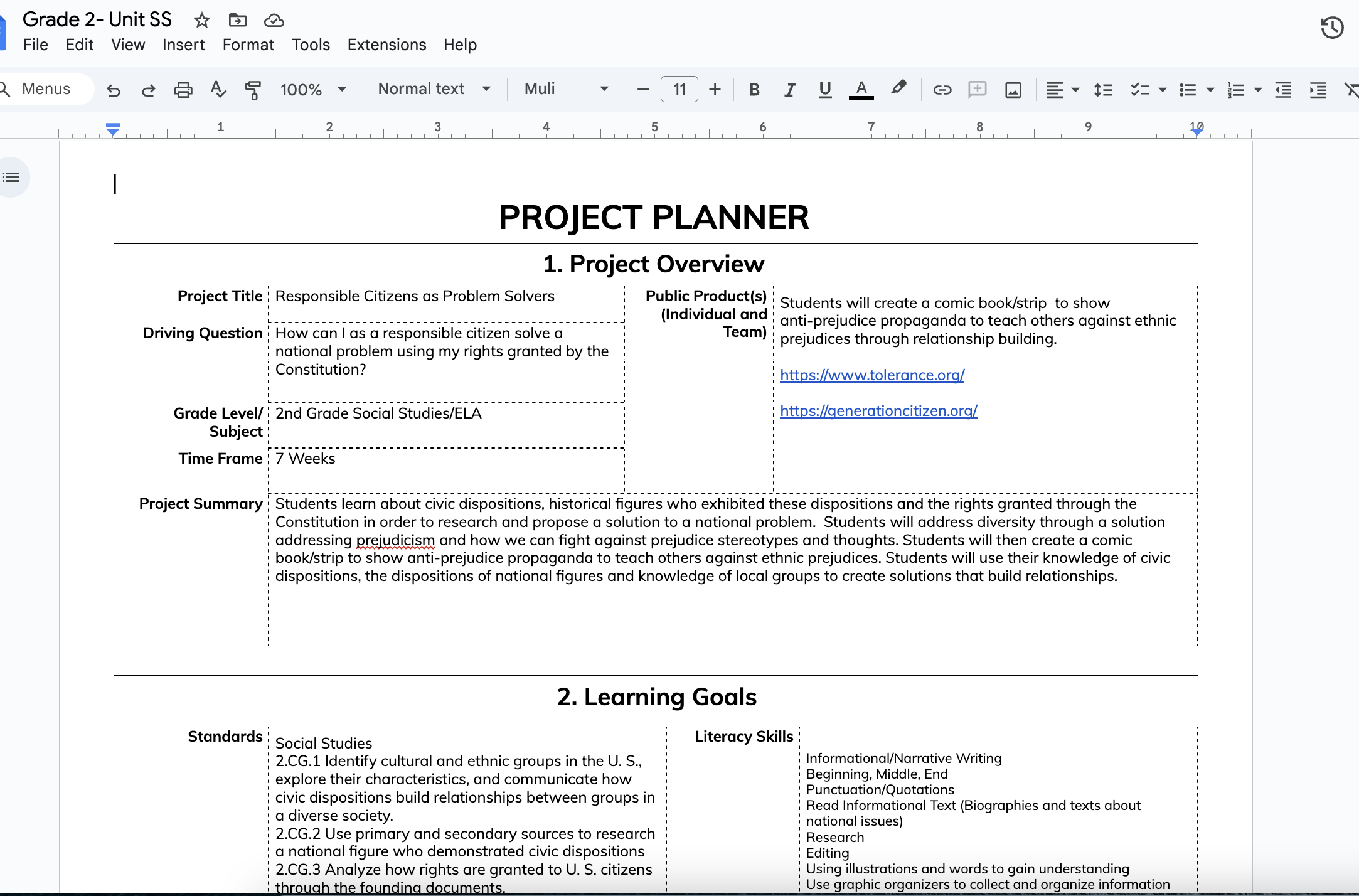Designing Collaborative Professional Development for Teachers
Role: Program Coordinator and Instructional Designer
The Challenge
Unlike most district programs that provided teachers with fully developed daily curriculum maps, our language immersion program required teachers to design their own interdisciplinary units from the ground up. The program launched in 2016 with Pre-K and Kindergarten and expanded each year, adding a new grade level annually. By the 2018–2019 school year, we included 2nd grade, and by the time I left in 2021, we had grown through 4th grade and were preparing to launch 5th grade the following year.
Teachers were expected to integrate literacy standards into science and social studies units within a Project-Based Learning framework — a major shift from the district’s isolated, subject-specific units. Many were new to this level of creative curriculum design, and tasks such as unpacking standards, creating assessments, and designing authentic projects were initially unfamiliar. We needed a professional development model that would build teachers’ confidence and skill in designing meaningful, interdisciplinary units aligned with program goals and language immersion standards.
The Process
I designed and facilitated a series of in-person professional development sessions held monthly or bi-monthly over two years. Drawing on a constructivist approach, I structured the sessions so teachers could recognize and apply their own background knowledge while developing new skills in curriculum design.
We began with the biliteracy framework and a repurposed IB Primary Years Program curriculum map to provide structure for early unit development. As the program evolved, we transitioned to the PBLWorks template to support authentic project-based learning design. Each session included short presentations, group discussions, and collaborative work time to build unit elements such as driving questions, assessments, and integration of literacy standards into content areas.
Screenshot of a unit plan in a PBL Works framework for 2nd grade Social Studies.
I collected feedback at each session using a “parking lot” reflection board and digital forms to identify ongoing needs and guide future sessions. I also provided individualized coaching between meetings to reinforce concepts and help teachers apply them to their unit planning.
The Outcome
Over time, teachers became more confident and skilled in designing their own units. They began to view themselves not just as implementers of curriculum, but as creators of learning experiences. Collaborative planning increased across Spanish and Chinese immersion tracks, and unit quality improved as teachers aligned standards, literacy goals, and PBL elements more intentionally.
The PD series also produced a consistent rhythm of professional reflection and growth. The frameworks and resources created during these sessions became reference tools for ongoing curriculum design and new teacher onboarding, helping the program maintain alignment as it expanded.
Reflection
This experience deepened my understanding of instructional design as an act of empowerment. By shifting PD from a presentation model to a hands-on, collaborative design space, I saw teachers move from dependence to ownership. It reinforced that designing for learning—whether for students or adults—requires structure, trust, and opportunities to build together.
